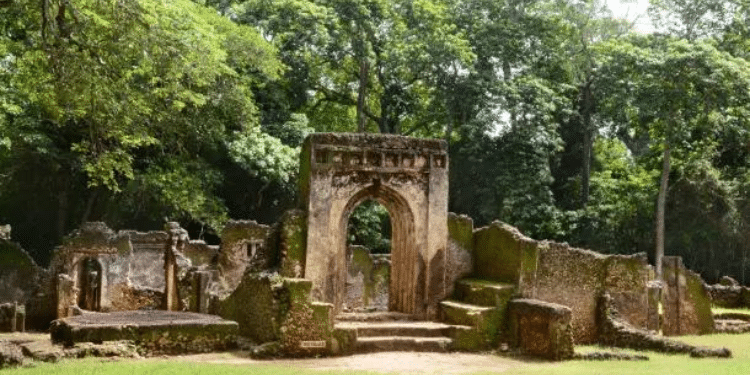A Kenyan town was among a list of 27 nominations announced by UNESCO which were set to be examined by its World Heritage Committee for inscription to the World Heritage List.
UNESCO Eastern Africa in a statement on Saturday, July 27, announced that the historic Kenyan Town of Gedi has since been inscribed in the World Heritage list after the Committee examined the proposal.
Gedi Town, which is a recognized archaeological site in Kilifi County, was inscribed into the World Heritage List by UNESCO during its 46th session that started on 21st July, 2024.
“UNESCO’s World Heritage Committee holds its 46th session from 21 to 31 July 2024 in New Delhi (India). Among other things, it will examine the proposals of 27 sites for inscription on the World Heritage List, and the state of conservation of 124 sites already inscribed on the World Heritage List, and on the List of World Heritage in Danger,” read part of an earlier statement by UNESCO.

UNESCO said that the Historic Kenyan Town and Archaeological Site was inscribed following the examination of proposals for 27 sites which is ongoing.
“Proud moment for Kenya. The Historic Town and Archeological site of Gedi is now formally inscribed on the World Heritage List at the 46th Session of the World Heritage Committee!” said UNESCO.
Gedi Town Inscribed in World Heritage List
According to UNESCO, the Committee is examining the dossiers of 27 sites proposed for inscription on the World Heritage List, which included the Historic Kenyan Town.
The process of examining the sites according to categories including natural, mixed and cultural started on July 26 and is set to end on July 29.
Also Read: Inside Unique Free Campus Built in the Middle of Turkana Desert
Kilifi Governor Gideon Mung’aro and Foreign Affairs Principal Secretary Korir Sing’oei welcomed the inscription after the confirmation on Saturday.
In a statement, PS Korir said the inscription of Gedi as a UNESCO heritage site will enhance government and community protection and conservation of the site.
On the other hand, the Committee examined the state of the 124 sites already inscribed on the World Heritage List from 23 to 25 July.
According to UNESCO, 57 of the 124 sites are also on the List of World Heritage in Danger.
Other sites fronted for inscription included the Royal Court of Tiébélé (Burkina Faso), Beijing Central Axis: A Building Ensemble Exhibiting the Ideal Order of the Chinese Capital (China), and Schwerin Residence Ensemble (Germany).
Moidams – the Mound-Burial System of the Ahom Dynasty (India), Via Appia. Regina Viarum (Italy), Hegmataneh and Historical Centre of Hamedan (Iran (Islamic Republic of)) and Sado Island Gold Mines (Japan) were also part of the 27 sites considered.
History of Gedi
Gedi is surrounded by a remnant coastal forest, away from the coastline.
The now abandoned city of Gedi was one of the most important Swahili cities on the East African coast from the 10th to 17th centuries.
Also Read: French City Seals Deal with Kenya as Omanyala Sets Record
According to UNESCO, Gedi was, during the period, a complex and international network of trade and cultural exchanges that crossed the Indian Ocean, linking African coastal centers with Persia and other areas.
The site is clearly delineated by walls and features the remains of domestic, religious, and civic architecture, and a sophisticated water management system. It strongly represents the characteristics of Swahili architecture and town planning, utilizing materials such as coral rag, coral and earth mortar and wood.
Follow our WhatsApp Channel for real-time news updates!
https://whatsapp.com/channel/0029VaB3k54HltYFiQ1f2i2C











































































